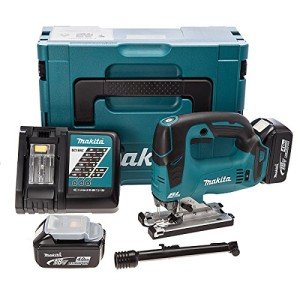
Cheap Mitre Saw
Add a reviewOverview
-
Founded Date November 13, 1930
-
Sectors Manufacturing
-
Posted Jobs 0
-
Viewed 6
Company Description
15 Best Documentaries About Mitering Saw
The Comprehensive Guide to Mitering Saws: Your Essential Carpentry Companion
When it concerns woodworking and woodworking, having the right tools is crucial for achieving precision and efficiency. Among the myriad tools offered, the mitering saw, commonly referred to as a miter saw, stands apart as an important instrument for both specialists and DIY lovers. This post digs into the intricacies of mitering saws, including their types, features, common applications, upkeep pointers, and responses to often asked questions.
What is a Mitering Saw?
A miter saw is a power tool utilized to make accurate crosscuts and miters in a workpiece. It operates by rotating a circular blade downwards onto the material to make exact cuts at specified angles. This tool is indispensable for jobs that require accuracy in cutting angles, such as framing, molding, and cabinets work.

Key Features of Mitering Saws
Mitering saws included a variety of features that enhance their performance. Below is a table summarizing some common functions:
| Feature | Description |
|---|---|
| Blade Size | Usually varies between 8 inches and 12 inches. Larger blades can cut thicker materials. |
| Miter Angles | Generally adjustable from 0 to 50 degrees in both instructions, enabling for versatile cuts. |
| Bevel Functionality | Many models use single or double bevel choices, enabling angled cuts on both sides of the workpiece. |
| Laser Guide | Provides a noticeable line for accurate cuts, enhancing precision and minimizing mistakes. |
| Dust Collection Port | Created to assist minimize debris and improve workspace cleanliness. |
| Safety Features | Includes features like electric brakes and safety guards for user security during operation. |
Kinds Of Mitering Saws
Mitering saws can be categorized into 3 main types, each serving various cutting needs:
-
Standard (Chop) Miter Saw: The many basic type, it enables uncomplicated crosscuts and angled cuts. However, it does not have the capability to bevel, which limits its versatility.
-
Compound Miter Saw: This type can tilt to create angled cuts on one side (single bevel). It’s ideal for cutting crown moldings and other ornamental materials.
-
Sliding Compound Miter Saw: The most flexible option, it features a sliding arm that enables the blade to move back and forth. This allows users to cut broader products without needing to reposition them.
Here’s a succinct contrast of these types:
| Type | Bevel Capability | Sliding Capability | Best Mitre Saws For |
|---|---|---|---|
| Standard Miter Saw | No | No | Fundamental crosscuts and angled cuts. |
| Compound Miter Saw | Single Bevel | No | Crown molding and small trim work. |
| Sliding Compound Miter Saw | Double Mitre Saw Bevel (some designs) | Yes | Wide baseboards and bigger workpieces. |
Typical Applications of Mitering Saws
Miter saws are incredibly versatile and discover applications in different domains:
- Framing: Constructs walls, roofings, and other structures.
- Molding: Cuts different shapes and sizes for trim and ornamental accents.
- Cabinetry: Accurate cuts for door frames, shelving, and cabinets.
- Floor covering: Ensures exact cuts for wood, laminate, and tile flooring setups.
Upkeep Tips for Mitering Saws
To lengthen the lifespan and performance of a miter saw, proper maintenance is essential. Here are some vital maintenance suggestions:
-
Regular Cleaning: Remove collected dust and particles after each use, particularly from the blade and surrounding locations.
-
Blade Maintenance: Inspect the blade for dullness and nicks. Routinely sharpen or replace it to preserve cutting efficiency.
-
Lubrication: Apply lube to the pivot points and sliding mechanisms to ensure smooth operation.
-
Calibration: Periodically check and adjust the miter and bevel settings for precision.
-
Inspect Cords and Connections: Ensure that power cords are undamaged and connections are secure to avoid electrical threats.
FREQUENTLY ASKED QUESTION: Mitering Saws
1. What is the distinction in between a miter saw and a table saw?
Miter saws make angled cuts and crosscuts at particular lengths, while table Mitre Saws For Sale are primarily used for straight cuts on bigger sheets of material. Miter Mitre Saws Uk are more portable and perfect for specifically angled cuts.
2. Can I use a miter saw for rip cuts?
While it’s technically possible to perform rip cuts on a miter saw, it’s not advised. A table saw is developed particularly for rip cuts and will offer more accuracy and safety.
3. What size miter saw should I select?
The size of the miter saw must depend on the jobs you prepare to carry out. For general use, an 10-inch model will be enough, while professionals or those working on larger jobs may choose a 12-inch design.
4. Are miter saws safe to use?
Yes, miter saws are safe when used appropriately. Constantly follow the manufacturer’s standards, use appropriate security equipment, and make use of the saw’s security functions.
5. How can I guarantee accurate cuts with a miter saw?
To accomplish exact cuts, ensure your product is securely secured, utilize a sharp blade, adjust your miter and bevel settings before use, and follow a constant cutting technique.
The mitering saw is a fundamental tool that every woodworker ought to have in their arsenal. Whether you’re a beginner handling your very first DIY project or a seasoned professional dealing with complex designs, understanding the performance and maintenance of mitering Mitre Saws For Sale can significantly enhance your craftsmanship. By selecting the ideal type of saw for your requirements and adhering to Best 305mm Mitre Saw practices for upkeep, you can ensure success in your woodworking undertakings.
